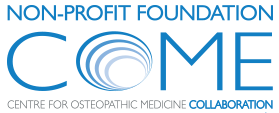Resolution of dacryostenosis after osteopathic manipulative treatment
| By Daniele Gualdi | 0 Comments

Journal of the American Osteopathic Association
This case report is on a 9-month-old boy with persistent dacryostenosis who was scheduled for lacrimal duct probing after first-line treatments failed. After a single session of osteopathic manipulative treatment, the patient’s epiphora and other symptoms resolved, and he no longer needed surgical probing … ABSTRACT











